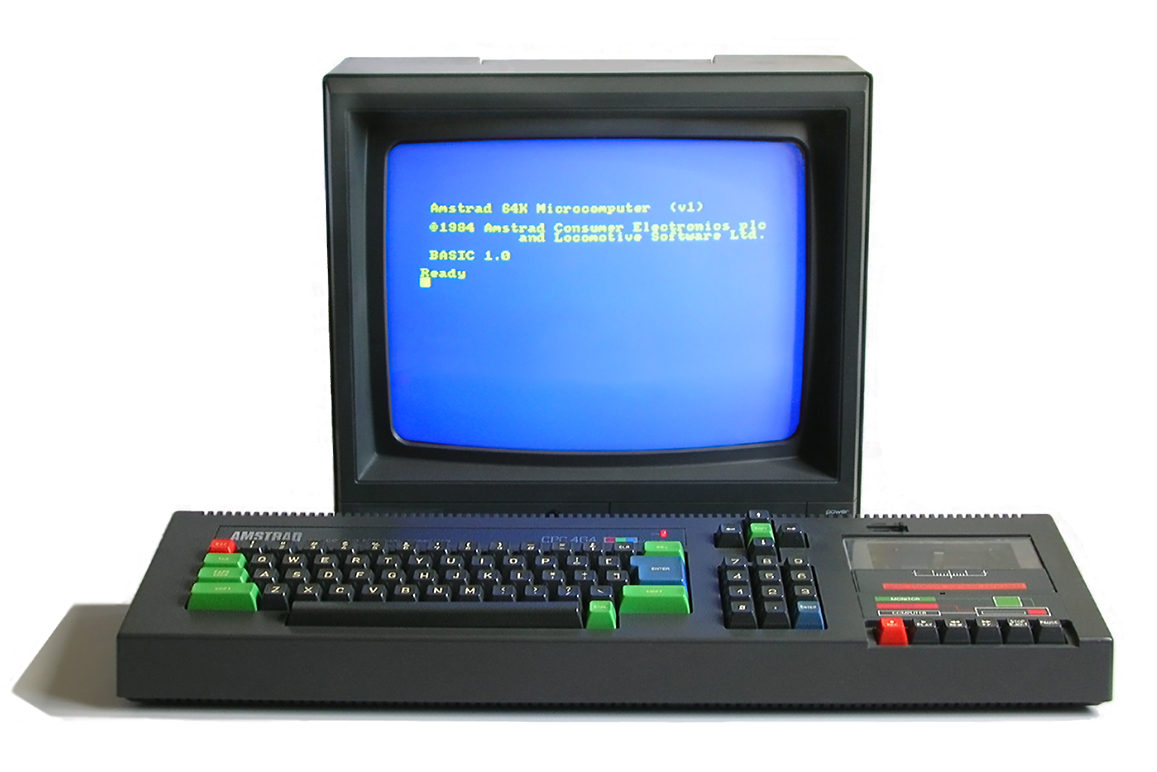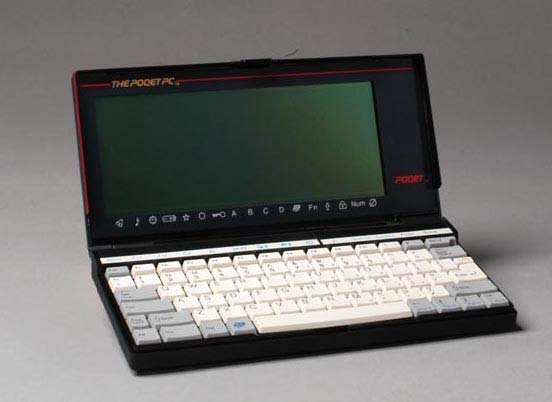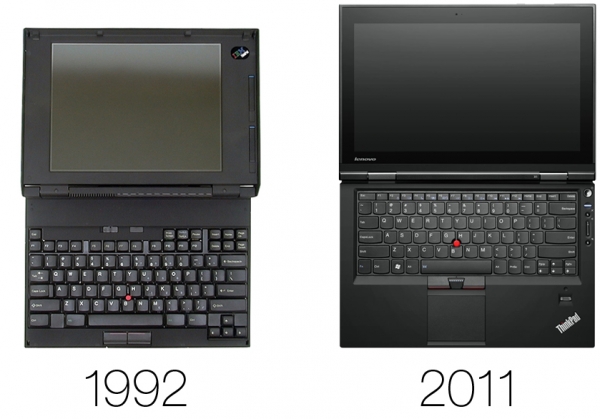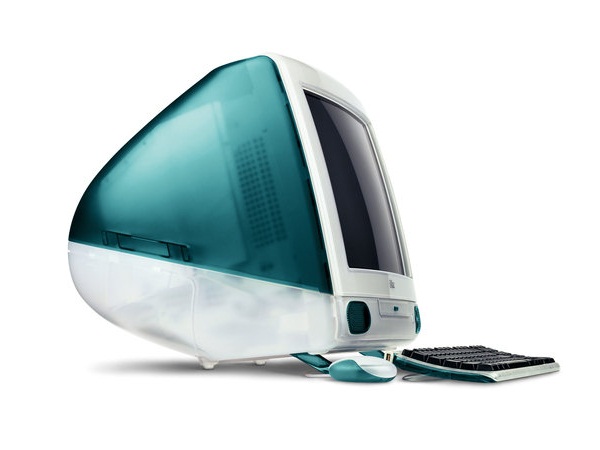In Pictures: Iconic Machines From Computing History
In the relatively brief history of computing, only a few machines have become iconic. Not necessarily because they were a commercial success, mind you, but because they introduced technologies or concepts that went on to become influential.
1984: Apple Macintosh
By 1984, PC-compatible systems were beginning to take a dominant presence in the personal computer market. But they would meet a formidable opponent when Apple launched its Macintosh. This little computer was revolutionary in several ways. Everything was housed in a single unit, making it very compact, stylish, and approachable to novice users. The interface was no longer a plain screen with stacks of text-based command lines. Instead, the Mac had a graphical user interface that employed the desktop metaphor. Icons, windows, and even the file menu were all introduced to the public in the Apple Macintosh. The new GUI was displayed on a 9” black-and-white monitor pushing out 512x342 pixels. This screen established 72 DPI as the standard for graphical user interfaces. The Macintosh was also remarkable for its power, featuring a Motorola 68000 processor clocked at 8 MHz, 128 KB of RAM, and a 400 KB 5.25” diskette drive. For $2,495, it was considered a great buy.
1984: Amstrad CPC464
While the U.S. was clearly the epicenter of the personal computing revolution, some interesting computers came out of other countries, too. Amstrad, a U.K.-based company named after its creator (Amstrad: Alan Michael Sugar Trading), produced one of the more memorable machines: the Amstrad CPC464. The first part of this computer’s name was derived from its main attraction, a color display. Hence, Colour Personal Computer (CPC). The first model was the CPC464, powered by an 8-bit Zilog Z-80 processor running at 4 MHz with 64 KB of RAM. And that's where the 464 comes from. The CPC was designed as an all-in-one, with its guts inside the keyboard unit, powered by the monitor unit. The monitor’s display was in bitmaps, with three modes available: 160x200 pixels in 16 colors, 320x200 pixels in 4 colors, or 640x200 pixels in two colors. The Amstrad CPC464 was compatible with another popular personal computer at the same time, the ZX Spectrum, though the CPC’s graphics capabilities made it the platform of choice for video games.
1985: Amiga 1000
In 1985, Commodore made waves when it launched the Amiga, a computer that was vastly ahead of its time. The key to the Amiga’s strength was its coprocessors. In addition to its Motorola 68000 CPU clocked at ~7 MHz, the Amiga had a sophisticated graphics chipset capable of displaying 600x256 pixels in 16 colors. The Amiga also had a very good audio processor that could handle four 8-bit channels. The Amiga 1000 also had an edge thanks to its operating system, AmigaOS. This 32-bit OS featured preemptive multitasking and a color GUI with windows and icons. Unfortunately, poor marketing kept the Amiga from becoming a standard. Commodore was unable to capitalize on its technological superiority, and like most others, was eventually overtaken by the PC. The last Amigas were sold in 1994.
1987: IBM PS/2
In 1987, the success of the PC was no longer in doubt. But IBM had lost control of it. Vendors like Compaq got the jump on Big Blue. Compaq marketed the first PC-compatible computer with an Intel 80386 processor, so IBM tried to regain the upper hand by launching its PS/2. Unlike the PC AT and PC XT, PS/2 (Personal System 2) used a proprietary architecture. Among its innovations were a protected BIOS and new bus, both of which were usable under license. Technically-speaking, the PS/2 was a very good computer, but IBM’s competitors and customers tended to shun it due to higher cost and general contentment with the existing PC-compatible ecosystem. The PS/2 also featured a new operating system, OS/2, which was co-developed by Microsoft. However, OS/2 didn’t receive a GUI until 1988, so it had to compete with Microsoft’s other OS, Windows 2.0. The PS/2 was a commercial failure, but several of its features went on to become staples for years to come, namely PS/2 keyboard and mouse ports and the VGA interface.
1989: Poqet PC
The first portable computer to hit the market, 1981’s Osborne 1, weighed 22 lbs and filled a suitcase. Eight years later, Poqet introduced the first sub-notebook-class PC, the Poqet PC. It weighed just 19 oz, was one-inch thick, and about the size of an envelope (8.8” x 4.3”). The Poqet PC featured an 80C88 processor clocked at 7 MHz. The 80C88 was a clone of Intel's 8088 fabricated using CMOS technology. The Poqet came with 512 KB of RAM and 640 KB of ROM that contained the BIOS, MS-DOS, and a few additional software applications. The reflective DTSN screen displayed 640x200 pixels and had a diagonal measurement of approximately seven inches. Power was supplied by two AA batteries, and battery life was up to 20 hours under heavy use!
Aside from its record-breaking small size, the Poqet ushered in a concept that still survives today: memory cards. Using a format that would later become PCMCIA, the cards contained either RAM for storing the user data, or ROM for additional programs.
1991: Psion Series 3
Even smaller than a subnotebook, the Personal Digital Assistant experienced its first major commercial success thanks to an English company called Psion. In 1984, the company launched its Organiser, which, while very small, was handicapped by its two-line display. The real breakthrough happened in 1991 with the Psion Series 3. It was even smaller than the Poqet PC at just 6.5”×3.3”x0.9”, and weighed half as much at just 9.7 oz. However, the Series 3 was less powerful with its NEC V30H CPU, another clone of Intel's 8088 running at only 3.84 MHz. Its smaller 5” display also had lower definition at 240x80 pixels. Nevertheless, the Psion Series 3 still had all the functions of a PDA: address book, calendar, calculator, word processor, spreadsheet, and handwritten note taking. In 1993, the Series 3a doubled the unit’s CPU power and display definition. The line finally ended with the Series 3mx in 1998.
Get Tom's Hardware's best news and in-depth reviews, straight to your inbox.
1992: IBM ThinkPad
While IBM eventually failed in the desktop PC market, the company succeeded in etching its brand into the world of portable computers. In 1992, IBM launched the ThinkPad, a name that has been a benchmark in business-grade laptops for two decades. Among the first three ThinkPad models was a 10” keyboard-less tablet, the ThinkPad 700T. The two other models, both laptops, introduced the line’s emblematic TrackPoint in the center of the keyboard (that red pencil eraser thingy). The high-end version, the 700C, featured an IBM-manufactured 486SLC processor clocked at 25 MHz and 10.4” color VGA display (the first on the market). The ThinkPad brand, along with IBM’s entire personal computer division, was bought out by Lenovo in 2005.
1993: Apple Newton
Meet the Apple Newton, an ancestor of today’s venerable iPad. To be precise, Newton is the name of the complete platform and not just the device pictured. Newton OS operated on different devices from Apple, Sharp, Motorola, and others. This was Apple’s first venture into the PDA segment. In fact, the term PDA was coined by Apple’s then-CEO, John Sculley. While Newton offered a few major innovations, the most notable was handwriting recognition via its touchscreen.
Apple’s line of NewtonOS-based PDAs was called MessagePad. The original MessagePad used an ARM 610 processor running at 20 MHz, with 640 KB of RAM. But despite having relatively powerful hardware for the time, the Newton was ultimately a failure. The first MessagePads had very short battery life and users quickly found that the handwriting recognition performed poorly. By 1998, Apple threw in the towel.
1997: IBM Deep Blue
While Apple and Psion were working to miniaturize computers and put one in everyone’s pocket, IBM was pursuing a very different goal: making computers as intelligent as humans. And to prove it was possible, Big Blue built a computer capable of beating the world’s best chess players at their own game.
Its name, Deep Blue was an amalgamation of “Deep Thought,” the name of the megacomputer in Hitchhiker’s Guide to the Galaxy, and IBM’s own nickname. Deep Blue was originally pitted against the then-world chess champion Garry Kasparov. The supercomputer lost its first match in 1996, but won a re-match in 1997 after undergoing a major upgrade. Its winning configuration (Deeper Blue, as it was sometimes referred to) consisted of two racks containing a total of 30 IBM P2SC (Power2 Single Chip) processors clocked at 120 MHz and 480 specialized coprocessors. It measured 11.38 GFLOPS using the Linpack benchmark, which made it the 259th most powerful supercomputer of its time.
1998: Apple iMac
For Apple, the 1990s were a difficult time. Its market share eroded, losses were accumulating, and Mac OS was aging in comparison to Windows 95, which was busy revolutionizing the PC landscape. But in 1997, Steve Jobs returned to Apple and changed everything. His first order of business was to secure a large investment. This influx of cash came from sworn enemy Microsoft, which also agreed to supply Office for the Mac. Then, in August 1998, Steve Jobs unveiled the iMac, a worthy follow-up to 1984’s original Macintosh. Its all-in-one design did away with most wires and cables, and its translucent shell was radically different from the beige PC towers that were the standard back then. The original iMac carried a fast G3 processor, 100 Mb/s networking, a large high-definition display, a fast CD drive, USB ports, and a distinct lack of the diskette drive. The striking design, coupled with strong internals, ensured the iMac's immediate success. No fewer than 800,000 units were sold during the first five months after the launch. This success restored consumer and investor trust in Apple. The rest is history.
-
dudemcduderson I actually like the slide show thing, keep it up Tom's! In the modern era I feel like the Yoga or Surface Pro should have at least made the list because they run full featured x86 OSes unlike the iPad.Reply -
yannigr You forgot the oldest analog computerReply
http://en.wikipedia.org/wiki/Antikythera_mechanism
The Antikythera mechanism is an ancient analog computer designed to calculate astronomical positions. It was recovered in 1900–1901 from the Antikythera wreck, but its significance and complexity were not understood until a century later. Jacques Cousteau visited the wreck in 1978 but, although he found new dating evidence, he did not find any additional remains of the Antikythera mechanism. The construction has been dated to the early 1st century BCE. Technological artifacts approaching its complexity and workmanship did not appear again until the 14th century AD, when mechanical astronomical clocks began to be built in Western Europe. -
Belardo Imagine what would have happened if Steve Jobs never saw the GUI computer at Xerox?Reply
The Amiga computer was in development before the Mac was released to the public. It's still amazing that the apple II sold as well as it did considering the C=64 was so much cheaper yet better. -
PapaCrazy 34/35 is not a computer, its the anti-computer. And 35/35 appears blank... a bad omen, or just spooky? Either way, it's also anti-climactic. And this slideshow thing is demeaning for some reason. Makes me feel like I'm in nerd kindergarten.Reply -
Ioannis Doukakis I believe that you must include two more computers:Reply
a) Epson HX-20, the first actual notebook with battery
b) ZX-Spectrum one of the most popular personal computers -
Spinoza1 You also forgot the first fully programmable computer, the Zuse Z3 from 1941:Reply
http://www.humanismus.com/_/Konrad_Zuse_files/Munich%20248.jpg









